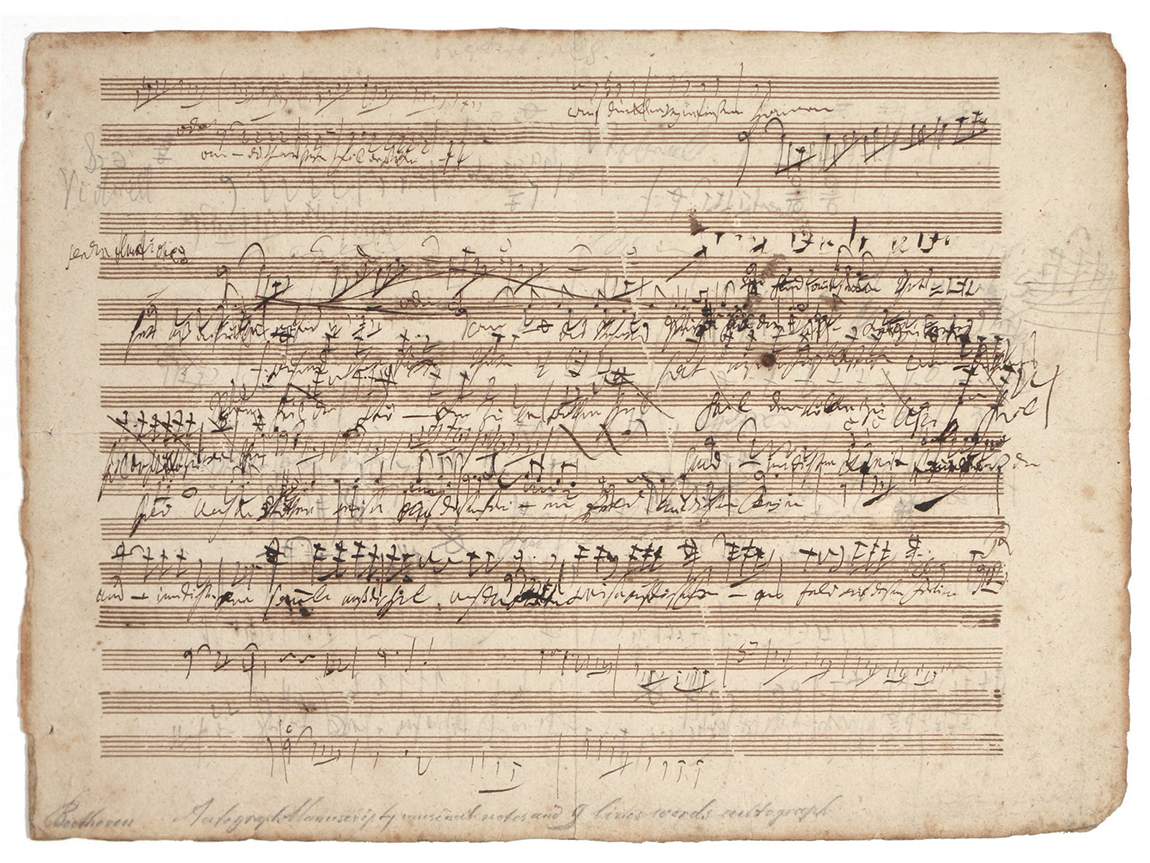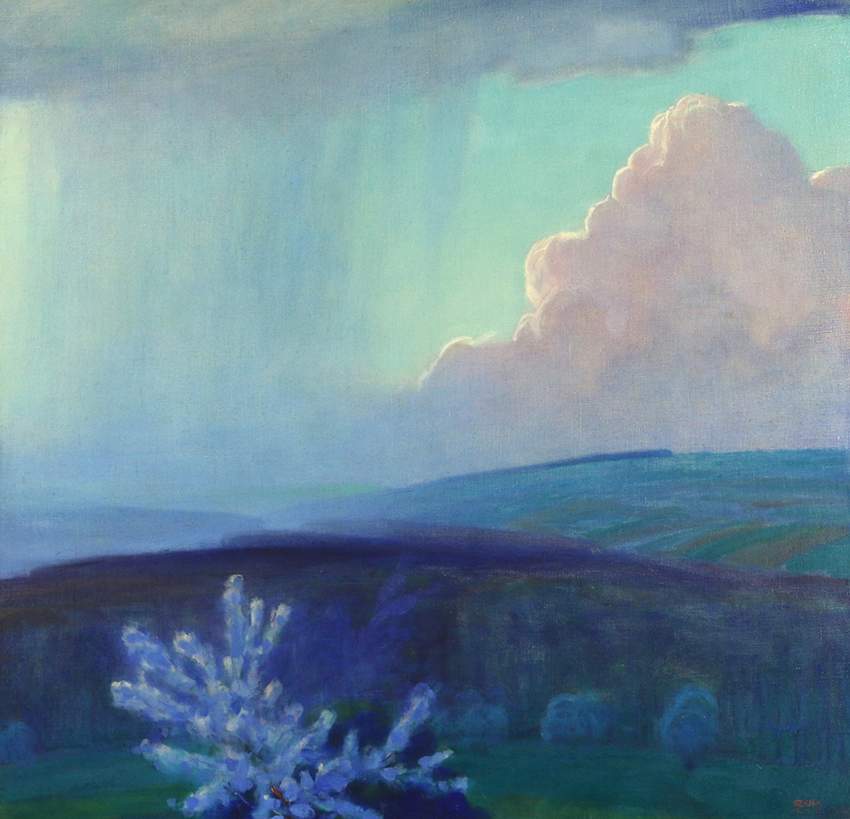BEDFORD, N.Y. — A newly discovered autograph sketchleaf by Ludwig van Beethoven headlined Butterscotch Auction’s November 22 sale at Historic Hall, selling for $120,000 including premium.

A newly discovered autograph sketchleaf by Ludwig van Beethoven, with music to Opus 117, König Stephan, written in 1810, sold for $120,000.
The sketchleaf was discovered by one of the gallery’s appraisers, Brendan Ryan, in a Greenwich, Conn., home. “It has been in the same family for about 100 years and was acquired from the collection of Fred M. Steele, a wealthy Chicago lawyer who amassed an important collection of autographs that was auctioned off in 1917. A letter of receipt from a Mr Künzel of Leipzig addressed to Steele and dated 1886 accompanies the lot,” Ryan said.
According to Ryan, who coincidentally trained as a composer and majored in music before going into the auction business, “complete Beethoven sketchleaves are rare. After he died, most of his paper goods were purchased by dealers and cut up into smaller sections to be sold as souvenirs to tourists and patrons, so having a complete sheet — especially one so thoroughly used — is a very rare find.” With the help of music history professor Dr Carmelo Comberiati of Manhattanville College, Ryan was able to identify the music as belonging to Beethoven’s Opus 117, König Stephan, a stage work written for the opening of a new theater in Budapest in 1810.

“Voulangis Landscape with Clouds” by Edward Steichen (American, 1879–1973), 1909, oil on canvas, 24¼ by 25 inches, realized $90,000.
According to Ryan, four other leaves from the same sketchbook are in the Beethoven-Haus in Bonn, and are viewable in their digital online archive. Comberiati said, “Beethoven created his own book from various paper on hand and used it while at the spa in Teplitz from late 1810 into mid-1811. Although the type of paper used varies among the known examples, all share the same three holes that the composer punched along the left hand margin when he bound the loose sheets together. This was a major indicator of the sketchleaf’s origin.”
Also catching fire at the sale was a rare landscape painting by Edward Steichen (American, 1879-1973), a 24¼-by-25 inch oil depicting the nuances of clouds above what is likely the French countryside around his home in Voulangis, which became his base of operations from 1908 to 1924. Rare, because Steichen after becoming a commercial photographer ended up burning all but about 90 of his paintings, the Tonalist work went out at $90,000 to applause in the gallery.
The 800-lot sale was abundantly filled with a selection of American paintings, the collection of musical and patriotic manuscripts, jewelry and Hermès bags. A complete report will follow in a future issue.

